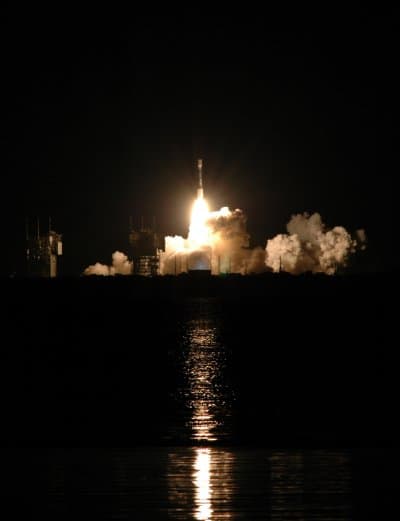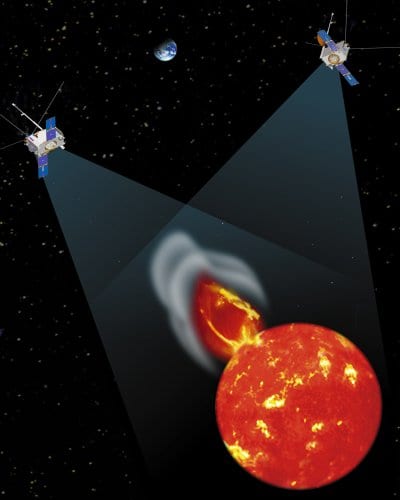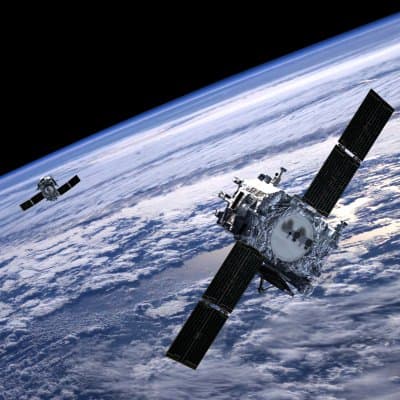Following several months of delays, NASA's Solar Terrestrial Relations Observatory mission (STEREO) finally took off from Cape Canaveral in Florida aboard a Boeing Delta II rocket early this morning (00:52 GMT). The two nearly identical spacecraft that make up the $540m mission will provide an unprecedented 3D view of the Sun and allow astronomers to study "coronal mass ejections" (CMEs). These violent solar eruptions can wipe out electrical grids on Earth and could potentially cause billions of dollars worth of damage to orbiting satellites.

CMEs come about because the Sun’s equator rotates more quickly than its poles. This differential rotation twists the magnetic field created in the centre of the Sun, causing the field lines to become entangled. When these field lines become so entangled that they reach breaking point, they release huge amounts of energy in the form of a CME, which can eject billions of tonnes of plasma laced with magnetic field lines into space at millions of kilometres per hour.
This plasma can create havoc in two ways. Firstly, it compresses the Earth’s magnetic shield, known as the magnetosphere, which can allow high-energy particles to penetrate the casing of geosynchronous satellites and disrupt their electronics. Secondly, the field lines within the plasma connect with those in the magnetosphere, setting up strong electric currents that can also affect satellites as well as damage power supplies on the Earth’s surface.
Currently, NASA’s Advanced Composition Explorer satellite (ACE) can warn of a geomagnetic storm about an hour before it strikes. According to STEREO’s project scientist Michael Kaiser, the newly launched mission will increase this notice period to about two days. STEREO’s satellites will contains nearly identical suites of visible, ultraviolet and radio detectors to track the direction and speed of CMEs from their origin at the solar surface, through the Sun’s atmosphere and then across the interplanetary medium.
The twin satellites will create their 3D images just as a pair of eyes does – by virtue of being slightly separated in space. Launched together, the spacecraft will fly in an eccentric orbit around the Earth and pass by the Moon in about three months’ time. At this point the satellites will be just far enough apart that the Moon’s gravity can fling them off in different directions – one will enter into an orbit around the Sun and the other will curve back on itself to fly past the Moon again six weeks later before entering a new solar orbit. The end result is that one spacecraft ends up in a solar orbit slightly head of the Earth while the other trails behind the Earth.





